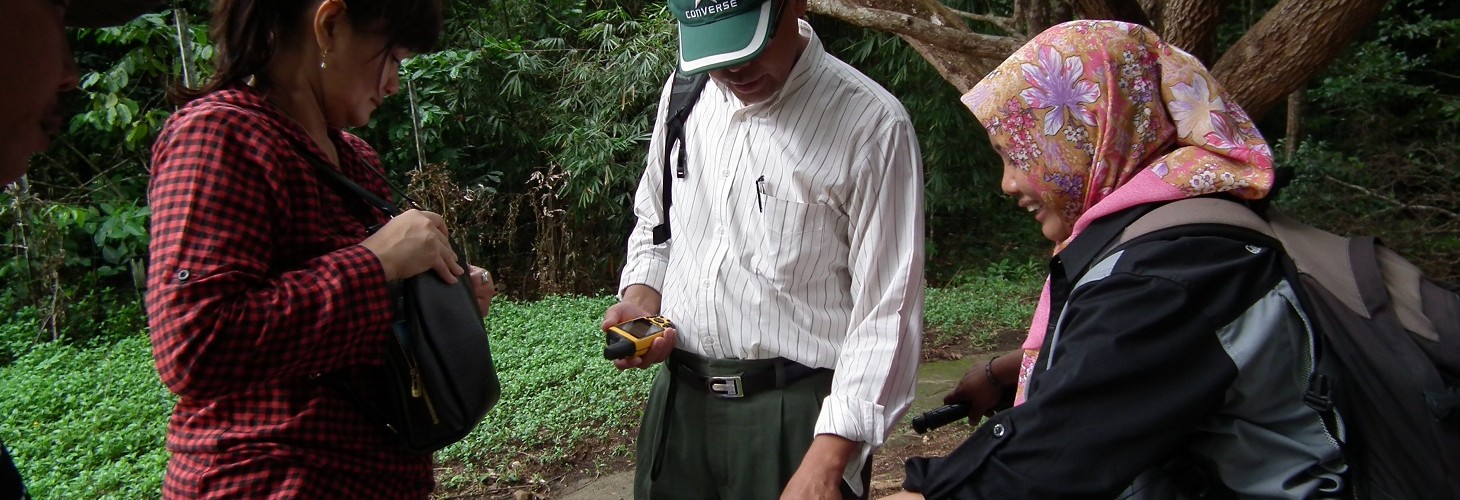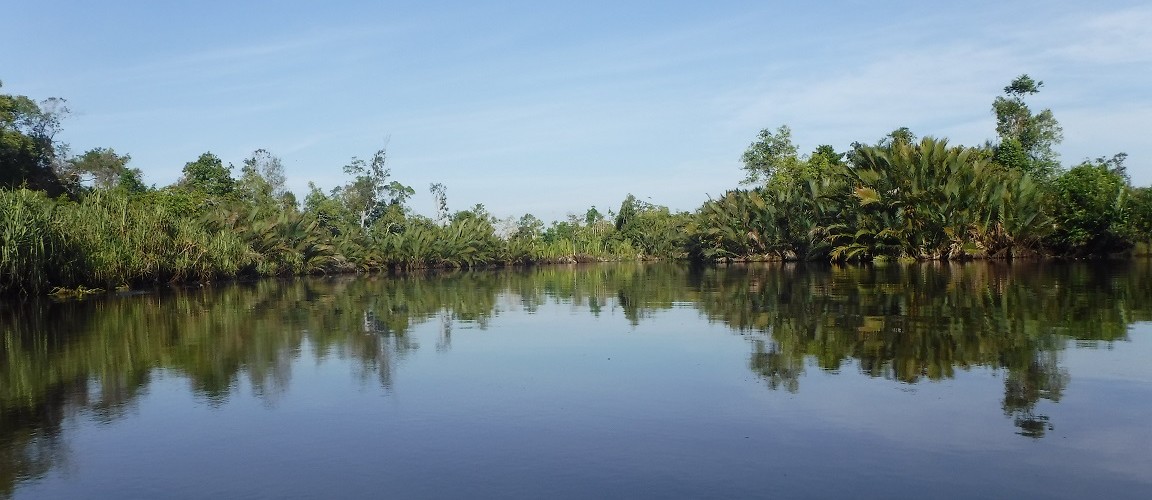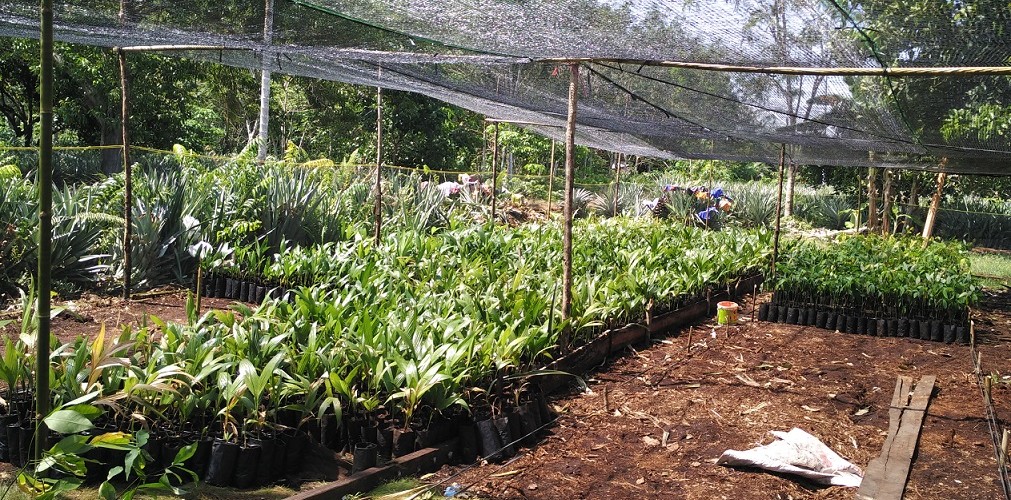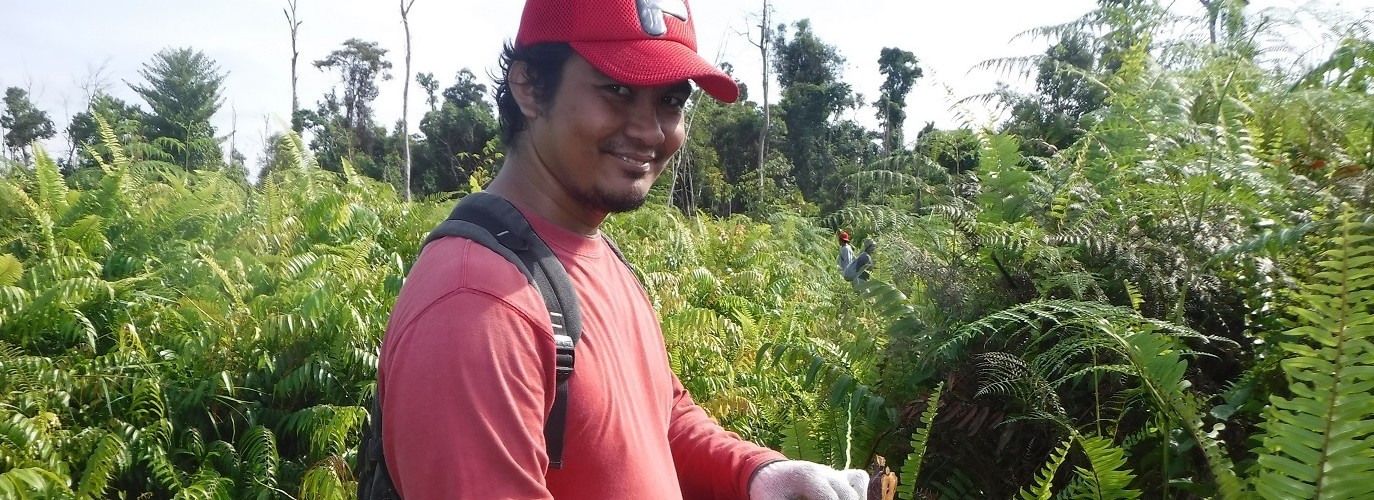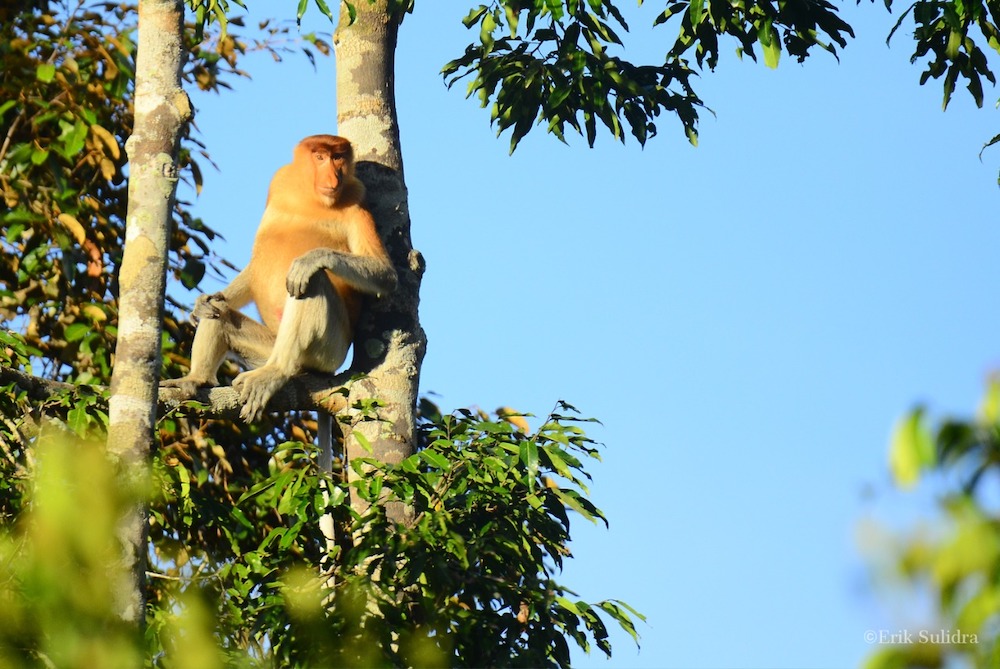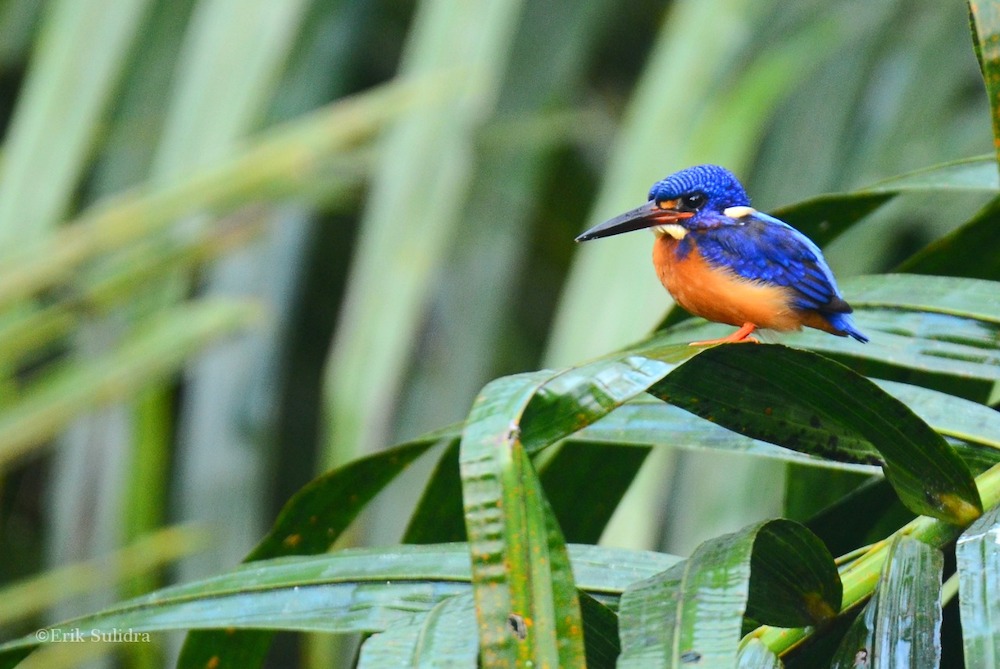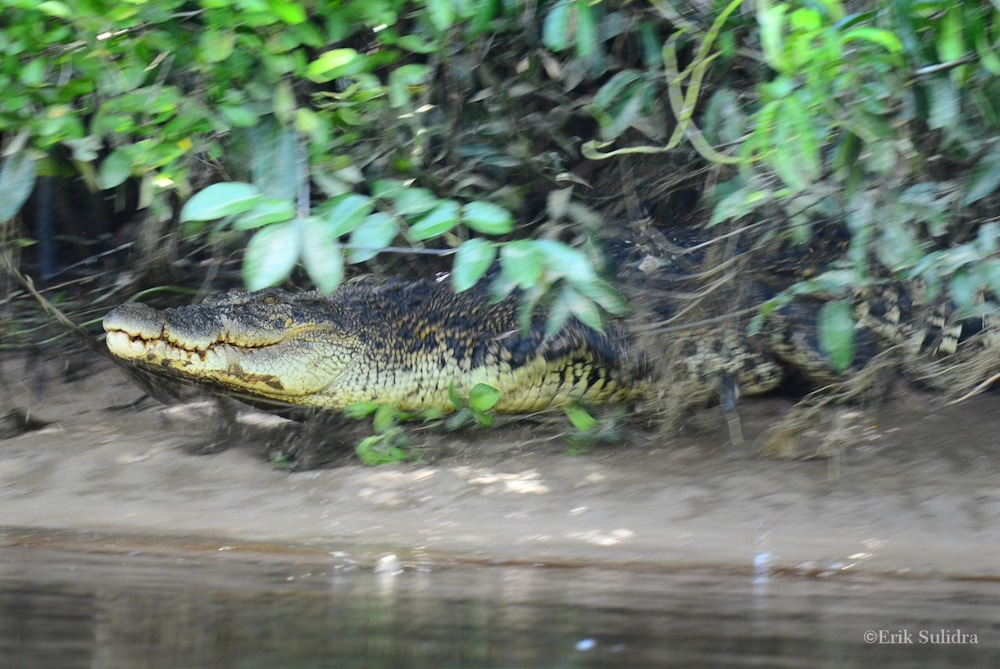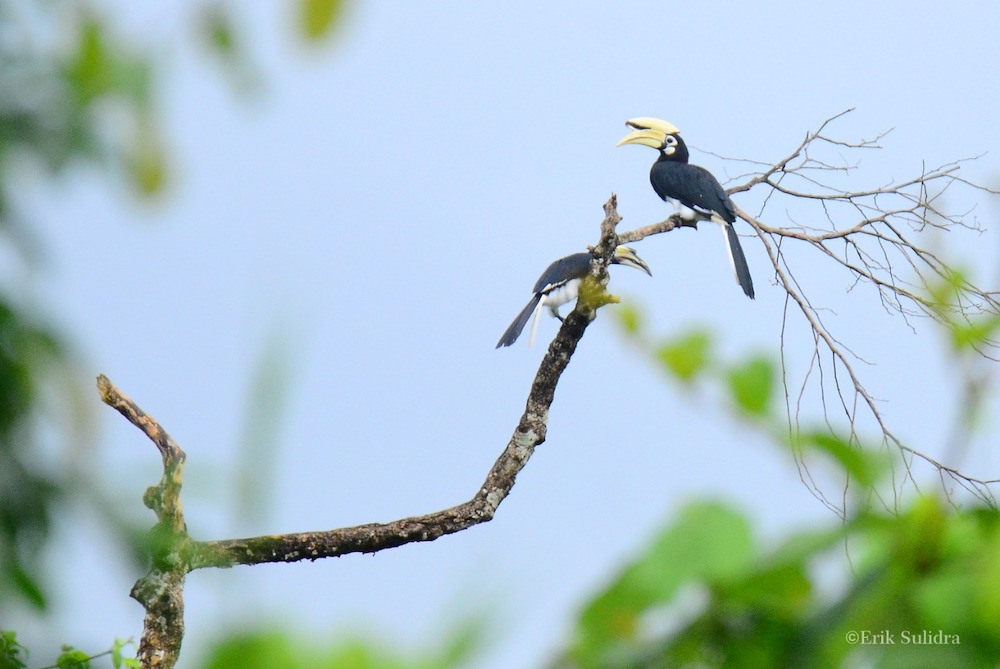By Erik Sulidra, Animal Protection and Rescue Coordinator
As of 2021, GPOCP has established seven customary forests in the Gunung Palung landscape. These seven customary forests can be divided into three areas: First, is the customary forest of Batu Barat Jaya with an area of 454 hectares; Second, is the 6,799-hectare Sungai Paduan protected forest area which contains four customary forests (Hutan Bersama, Alam Hijau, Kumbang Bertedoeh, and Banjar Lestari); Third, is the production forest area of Sungai Purang, which contains two customary forests (Simpang Keramat and Muara Palung), making up an additional 720 ha.

To aid the management of each customary forest, GPOCP conducts biodiversity surveys, which have been carried out annually since 2016. The purpose of the surveys is to estimate orangutan population sizes, understand the diversity of other wildlife species (especially from mammal and bird taxa), and collect data on plant species with high conservation value, as well as plants that are a source of food for orangutans. The knowledge gained from these surveys helps to inform customary forest management plans.
Our most recent survey began in mid-2020, and fieldwork was completed by the end of last year. In total, the survey consisted of 17 transect lines, each one kilometer in length. All of the transects were located in peat swamps within the customary forests. Some of these locations are quite remote and difficult to reach. Hutan Bersama, for example, which is in the village of Nipah Kunung, has just two routes of entry, from the north and from the south. To reach the customary forest by the northern route, our survey team had to travel by boat for six hours along a small tributary of the Paduan River. The southern route would have been no less difficult to use, while traveling via a road. Then, our team trekked through an open forest full of ferns for another three hours before we arrived at our camping location.

Since the completion of our fieldwork, we’ve been analyzing the data that we collected. During the survey we used methods similar to those used for the Park-wide orangutan nest survey, and thus the results can be interpreted using the same methods. We estimate that the population of orangutans in the Sungai Paduan protected forest is approximately 33 individuals. The population estimates in the Sungai Purang production forest area are about 3 individuals. We were unable to confidently estimate a population for the Batu Barat forest, because we only saw one “class C” (old with all brown leaves) orangutan nest in our transects. We have plans to re-survey this location, using more transects to more conclusively determine whether or not this forest is suitable orangutan habitat.

Between the three survey areas, of the more than 2000 individual trees recorded, 80% were orangutan food trees. This indicates that the potential food availability in the area is excellent for orangutans. We also identified three types of rare trees during the survey. Among them, “Keruing Belimbing” (Dipterocarpus grandiflorus) has endangered status, and “Meranti Paya” (Shorea platycarpa) and “Ramin” (Gonystylus bancanus) are both critically endangered.
We also identified 11 mammal species, other than orangutans, during the survey. These were the proboscis monkey (Nasalis larvatus), Bornean white-bearded gibbon (Hylobates albibarbis), red leaf monkey (Presbytis rubicunda), long-tailed macaque (Macaca fascicularis), sambar deer (Rusa unicolor), Bornean bearded pig (Sus barbatus), black-eared squirrel (Nannosciurus melanotis), tricolored squirrel (Callosciurus notatus), Prevost’s squirrel (Callosciurus prevostii), giant squirrel (Ratufa affinis), and sun bear (Helarctos malayanus). These animals were identified either from direct encounters/sightings, visual evidence (such as foot tracks or scratch marks on trees) or auditory evidence (animal sounds/calls).
There were also quite a lot of bird species. There were 42 bird species recorded in the forest of Batu Barat, 74 species in Sungai Paduan, and 49 species in Sungai Purang. Observations of these bird species were carried out both on and off the transect lines. Five avian families were identified, which is an important indicator for environmental assessment. These were hornbills (Bucerotidae), woodpeckers (Picidae), trogons (Trogonidae), birds of prey (Accipitridae) and bulbuls (Pycnonotidae). We also saw a saltwater crocodile (Crocodylus porosus) along the river in Batu Barat village. This also indicates that the availability of crocodile food (fish, amphibians, reptiles, birds and mammals) is still quite abundant there.
These customary forests are an important habitat for wildlife, functioning as the last home for some species, amid the surplus of oil palm concessions, Industrial Plantation Forests (HTI), and mining concessions that overwhelm the region. In addition to hunting and the keeping of wild animals as pets, habitat destruction caused by illegal logging and forest fires is a serious threat to wildlife. When this survey was conducted, our team found several locations where illegal logging was carried out. To help combat this, the Customary Forest Management Boards (LPHD), which are located in each customary forest, conduct regular patrols throughout the forest areas. This not only protects wildlife, but also human life, especially those living around the customary forest.
